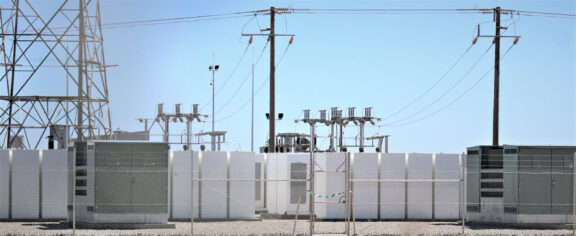Load bank testing is an integral part of any facility that relies on generators. Testing these power producers before they’re needed ensures they will function as expected without problems. By conducting load bank testing, you can avoid costly downtime caused by a faulty generator.
What Does a Load Bank Test Do?
The load bank testing procedure helps your generator’s operation in a few ways:
- Exercises the generator: The process exercises the generator to keep it in full functioning condition. By getting regular use, the generator’s parts are more likely to move and function as needed.
- Prevents wet stacking: A load bank test prevents wet stacking, which can happen when diesel-powered generators don’t have regular use and soot builds in the system. A load bank test runs fuels through the generator, helping burn off the diesel inside the engine.
- Verifies generator ability: The load bank test verifies that the generator will be able to create various levels of power to support necessary electrical equipment during an outage.
Regularly testing generators, especially those that support essential tasks like powering life-support equipment, with a load bank test is a necessary part of proper maintenance and care.
Why Load Bank Testing Is Essential
Load bank testing is not optional for many facilities. Regulations require emergency power systems to undergo maintenance and load testing periodically to verify their functioning and prevent problems for the facilities that rely on these backup power sources.
Two organizations mandate testing of emergency power sources. The National Fire Protection Association (NFPA) regulation 110 (NFPA 110-2019) addresses the minimum load testing requirements for emergency power sources. And the National Electric Code (NEC) 700 requires testing of emergency power sources. Any facility with a required Level 1 emergency power supply system (EPSS) to provide power to prevent loss or harm to human lives must test the system regularly.
Even systems that have Level 2 EPSS that do not preserve human life or safety must still conduct load testing. Many data centers fall under mission-critical facilities and also require EPSS with regulated testing.
How Often Should You Load Bank Test a Generator?

As an essential part of maintaining EPSS on-site, facilities should use a regular testing schedule. The schedule depends on whether the test involves the entire system or only the generator, called an emergency power supply (EPS) by the NFPA 110. The type of EPSS a facility has will indicate the timing of the testing. And the classification of the Level 1 EPSS and its type play roles in the requirements for timing.
Classifications indicate the minimum number of hours the system runs, and types give the time in seconds until the generator turns on. These types include:
- Type U: This option is the same as a UPS because the system operates without power interruption.
- Type 10: This type starts within 10 seconds.
- Type 60: Operation begins in a minute or less.
- Type 120: The generator requires up to two minutes to start.
- Type M: This type requires a manual start.
For Level 1 EPSS, per NFPA 110-2019 8.4.9, the entire system must undergo testing at least once every three years, or 36 months. The duration of the test should be at least equal to that of the class of the generator up to four hours. For instance, a Class 48 should run for at least four hours.
This testing procedure requires using the test option on one of the automatic transfer switches (ATS) for the EPSS. Then, test the other ATS in turn. Alternatively, you can open switches supplying power to ATS to permit them to function to switch on the generators. Loads for this type of test for diesel generators should be at least 30% of the load and meet the minimum exhaust temperature.
For gas-powered generators, use the load of the EPSS. This load bank testing procedure can meet the requirements for one of the monthly or annual tests of the generator.
Load bank testing requirements to exercise the generators include monthly load tests for at least 30 minutes, per NFPA 110-2019 8.4.2. The same requirements for meeting the manufacturer’s minimum exhaust temperature and no less than 30% of the kW load on the generator as the 36-month test apply.
According to NFPA 110-2019 8.4.2.3, diesel generators should have testing once a month plus an annual exercise using supplemental load banks to draw another 50% of the nameplate kW for half an hour. Then, the power load increases to 75% the nameplate kW for one hour.
The Benefits of Load Bank Testing
Though required, the sites that must conduct load bank testing of their generators reap several benefits from the process. For instance, data centers, hospitals, health care facilities and laboratories enjoy several advantages from having a load bank on-site to conduct frequent testing of their generators.
There are several pros of load bank testing for data center commissioning and the introduction of an emergency power source. For data center commissioning, regular testing of power systems can save money. As of 2016, data centers lost an estimated $8,851 per minute when they had unplanned power outages. This amount reflects a 38% increase from the study conducted five years previous.
The longer data centers go without power, the more money they lose. By initiating proper backup power and testing it monthly with a load bank, you can avoid monetary losses that occur from power outages and backup failures.
Other facilities that fall under load bank testing requirements have the following advantages of load testing:
- Keeps the generator operating
- Helps remove fuel from a generator to prevent wet stacking
- Meets requirements for owning or operating a generator in certain facilities
- Verifies that all ATS and the generator will work as expected in a power loss
The benefits of load testing make it a chore that you cannot skip when your facility owns and operates a Level 1 EPSS or Level 2 EPSS.
Contact Load Banks Direct for Load Bank Testing Equipment and Other Solutions
At LBD, our solutions for load testing include a variety of load bank types, including rental duty, customized products, industry-leading designs and support. Contact LBD to request a quote for the load bank you need to conduct tests of generators in your facility.

We Are Here
To Help
Our team is here to support you and solve your power challenges. Connect with our responsive experts today to learn about our customized power solutions and products.


